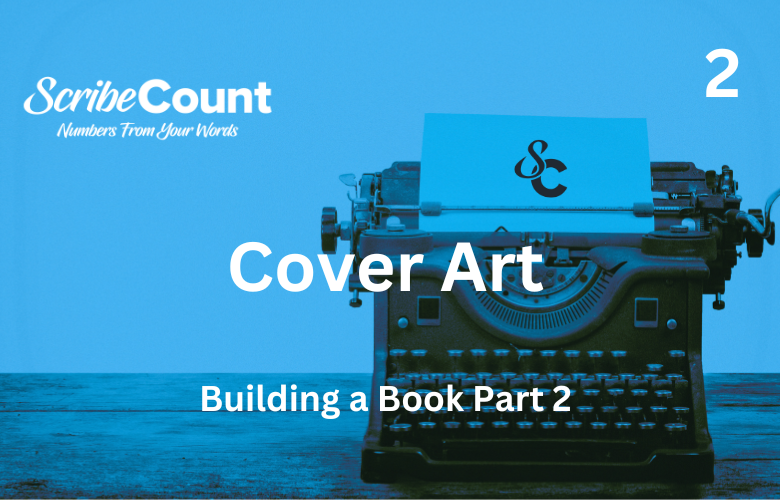The Importance of Good Cover Art for Indie-Authored Books
Authors on a budget will often ask where they should spend their money; what's the most important thing they should focus on?
My answer is always the same: Editing and Cover Art, and I'm not even sure which is more important. But we're talking about cover art here, so let's focus on that.
For an indie author, the book cover is one of the most critical elements of a successful publication. It serves as the first impression for potential readers and is a key marketing tool that can significantly impact sales. A professionally designed cover signals quality, genre appropriateness, and credibility, ensuring that the book stands out in an increasingly competitive marketplace. You WANT people to judge your book by its cover!
"You need a cover that communicates feeling, and is very clear on matching genre-expectations so readers can identify your book at a glance, without needing to look closer and figure it out (they won't)."
- Derek Murphy
When it comes to cover art there are two parts: the imagery and the technical requirements. Let's talk about imagery first.
Imagery
Genre Norms and Color Choices
Different
genres have established visual norms that help signal content to
potential readers. Science fiction often uses cool-toned, neon accents
with futuristic fonts, while romance relies on warm colors, script
fonts, and intimate imagery. Horror leans toward dark, moody palettes
with eerie typography, whereas fantasy may include intricate details,
mythical creatures, and dramatic lighting. Choosing colors that align
with genre expectations ensures that a book attracts the right audience. To be sure you are choosing the correct imagery you should first research the popular books in your genre. Note the colors and style of each and try to incorporate them into your own cover. Genres change and evolve over the years, so be sure the books you are looking at are not too old. Remember that whatever you choose for your book may need to be replicated for any books that follow. Is your choice relevant to the genre yet also flexible enough to work for a long series?
Gloss vs. Matte Finishes
Authors must decide between a glossy or matte finish for their book cover. A gloss finish enhances color vibrancy and adds a reflective quality, making it ideal for high-impact, image-heavy covers. Genres such as romance and fantasy often benefit from this finish due to the rich colors and detailed illustrations. Matte covers, on the other hand, offer a more subdued, sophisticated look, reducing glare and fingerprints. They are frequently used for literary fiction, non-fiction, and darker-themed books, such as thrillers or horror novels.
Placement of Titles, Author Names, Logos, Barcodes, and ISBNs
Title and author name placement follows general design conventions that prioritize readability. The title is typically larger than the author name, positioned at the top or center, while the author’s name is usually at the bottom or upper third of the cover. Logos, if used, should not overpower the main design elements but can be placed in a corner for branding purposes.
ISBNs and barcodes are placed on the back cover, typically in the bottom right corner. If selling directly through Amazon or another online retailer, authors may not need to include a printed price in the barcode area. However, if distributing to physical bookstores, pricing is often recommended.
Whatever imagery you choose for your cover it will need to exist along with these items.
The Technical Side
Standard Sizes for Print, Ebook, and Audiobook Covers
Print book covers vary depending on the format, with standard trim sizes determined by the chosen printing service. For example, KDP (Kindle Direct Publishing), IngramSpark, and BookVault each provide templates for various dimensions. A common size for trade paperbacks is 6”x9”, while mass-market paperbacks often measure 4.25”x7”. Large print editions tend to be around 7”x10” or 8.5”x11” for readability. Hardcover sizes can range from 5.5”x8.5” to 8.5”x11”, depending on whether they include dust jackets.
Ebook covers do not require a back cover or spine but must maintain high resolution for clarity on various screens. Amazon recommends a minimum of 2560 pixels in height and 1600 pixels in width, with a resolution of at least 300 dpi. Similarly, Apple Books and Kobo have their own file specifications, often requiring RGB color profiles rather than CMYK, which is used for print.
Audiobook covers are distinct in that they must be square, typically 2400x2400 pixels at 300 dpi. Platforms such as Audible, Findaway Voices, and Spotify for Audiobooks have slightly different requirements, but generally, the square format ensures compatibility with mobile and desktop displays.
Spine Calculations and Considerations
The book spine width depends on the page count and the type of paper used by the printer. IngramSpark, for example, provides a spine width calculator based on page thickness, with 50 lb paper requiring a different calculation than 70 lb paper. A book with 300 pages printed on cream paper (typically thicker than white paper) will have a wider spine than the same book printed on white. The correct spine width is critical, as an incorrectly sized cover file can lead to printing errors, misalignment, or rejection by the printer.
Paperback, Large Print, and Hardcover Variants
Paperback books are the most common format for indie authors, typically printed via POD (print-on-demand) services. They require a full wrap-around cover that includes the front, back, and spine. Large print editions follow the same principle but must also account for the increased page count and adjusted trim size.
Hardcover books come in two main formats: case laminate and dust jacket. Case laminate hardcovers have the cover printed directly onto the board, while dust jackets include an additional wrap-around sleeve. Each format requires precise template adjustments, with dust jackets needing an additional 0.5 to 0.75 inches for flaps. Services like IngramSpark and BookVault provide downloadable templates to guide authors in proper formatting.
Audiobook Covers and Promotional Materials
Audiobooks require a unique cover layout that differs from print and ebooks. The square format, combined with the need for high contrast text, ensures visibility in small thumbnail previews. Many audiobook distributors, including ACX and Findaway Voices, emphasize the importance of simple, bold text and minimal clutter to maintain readability.
Promotional materials such as 3D book images and sell sheets are valuable marketing tools. 3D mockups give potential readers a realistic view of the book in a physical setting, increasing perceived professionalism. Sell sheets, which include book details, target audience, and purchasing information, are useful for pitching books to bookstores and libraries.
Dimensions and File Requirements for IngramSpark, KDP, and BookVault
Each printer has specific file dimension requirements that must be met for acceptance. KDP provides free downloadable templates and requires covers to be in PDF format with at least 300 dpi resolution. IngramSpark demands similar specifications but also supports hardcovers with dust jackets, requiring additional bleed and flap space. BookVault offers advanced customization options, catering to indie authors who require varied trim sizes and premium finishes. The templates and file guidelines for these platforms can be found at:
Understanding Bleed, Gutter, and Margin
Bleed refers to the extra space beyond the trim size, ensuring that the design extends to the edge after trimming. Most POD printers require a 0.125-inch bleed on all sides. The gutter is the inner margin where the book is bound, and it must be wider in thick books to prevent text from disappearing into the spine. Margins define the safe zone for text and important elements, preventing them from being cut off.
Cover Art Pricing, Hiring Artists, and Copyright Considerations
Indie authors can expect to pay anywhere from $100 to $3,000+ for a professional cover, depending on the designer’s experience and the complexity of the artwork. Websites such as Reedsy, 99designs, and Fiverr offer various options, though it is essential to review portfolios and confirm licensing rights before hiring an artist.
Ownership of the final cover depends on the contract with the designer. Some designers grant full copyright to the author, while others retain rights, only licensing the design for book use. It is crucial to clarify this in writing to avoid legal issues.
A typical deal with a cover artist involves a contract outlining project scope, timeline, payment terms, revisions, and copyright ownership, with the artist typically retaining copyright unless explicitly transferred.
Conclusion
A well-designed cover is an investment in an indie author's success. By understanding the intricacies of cover dimensions, print requirements, genre expectations, and hiring the right designer, authors can ensure their book makes a strong impression. Utilizing professional design resources and following industry standards will help maximize both visibility and sales potential.

